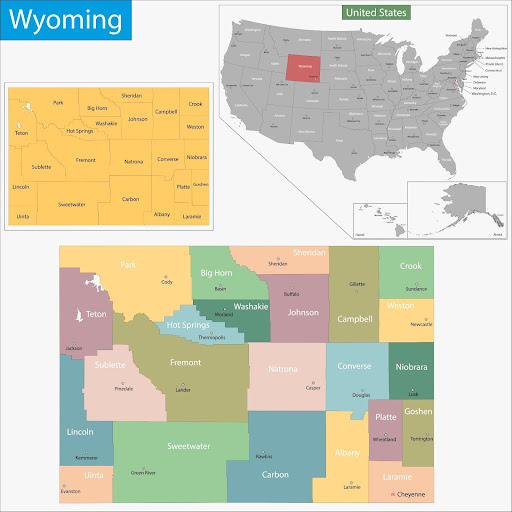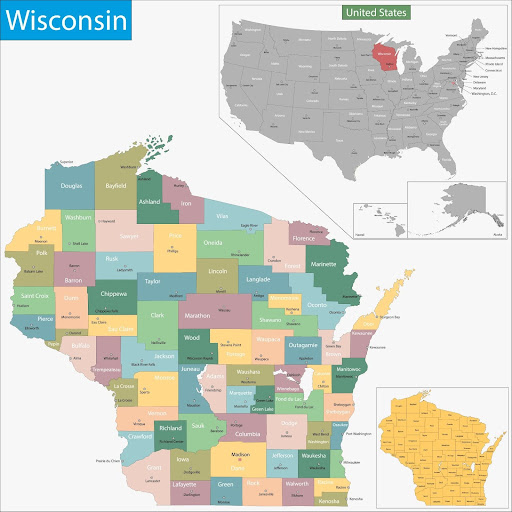Virginia’s wildfire terrain runs from lowland pine flats to rugged Appalachian slopes, and the investigation conditions are just as varied. The common thread? Human-caused fires. Most fires in the state start with someone’s backyard mistake.
For fire investigators, Virginia offers a unique operational landscape. Jurisdictional overlaps and rapidly changing seasonal risks make investigations here anything but simple. This guide lays out the essentials of wildland fire resources in Virginia: agency protocols, training hubs, jurisdictional roles, and how to track fires across the state as they unfold.
Keep learning in our wildland fire resources center.
Live Incident Updates & Maps
Use this tool to track wildfire activity across Virginia in real time:
State Overview
Virginia’s wildland fire behavior depends on region, elevation, and moisture. While large-scale crown fires are rare, fine fuel burns move quickly and can threaten homes within hours.
- Appalachian Highlands (Western VA): Fires run in dry leaf litter and pine understory. Slopes complicate suppression, and wind alignment can rapidly escalate what starts as a small flame front.
- Piedmont: A checkerboard of hardwood forests, pastureland, and subdivisions. Fires often stem from escaped agricultural burns or equipment sparks.
- Coastal Plain & Tidewater: Light fuels and sandy soils burn hot and fast, especially under low humidity. Access is often a challenge in marshy or flatwood regions.
- WUI Zones: Interface areas near Roanoke, Lynchburg, and the northern I-81 corridor are seeing more frequent backyard burns jumping into wildland.
Wildfire Season Timeline
Virginia experiences two primary fire seasons:
- Spring (Feb 15 – May): Most active period. Wind, low humidity, and dry cured fuels combine with high human activity. Investigators deal with everything from brush piles to campfires gone wrong.
- Fall (October–November): Leaf drop and dry weather create a second surge in activity, particularly in the western counties.
- Summer (June–August): Humidity usually keeps the risk low, but drought years can shift that quickly.
- Winter (December–January): Fires are less common but can still occur from careless burning during dry cold spells.
Key State Agencies Involved
Wildland fire suppression and investigation in Virginia involve multiple layers, often overlapping.
- Virginia Department of Forestry (DOF): Lead agency for wildland fire suppression and investigation on state and private lands. DOF staff are NWCG-certified and often serve as incident investigators. They also issue fire weather updates and enforce state burning laws.
- Virginia Department of Emergency Management (VDEM): Activates support during larger events and coordinates with regional IMTs.
- Virginia State Police: Called in for fatal fires, suspected arson, or when wildland fires cross into structural investigations.
- U.S. Forest Service (USFS): Manages the George Washington and Jefferson National Forests. Investigations on USFS land follow NWCG protocol and are led by trained law enforcement officers.
- National Park Service (NPS): Oversees fires on federal parklands such as Shenandoah National Park. Investigation responsibilities rest with the park fire staff or interagency teams.
- County Fire Marshal Offices & Local VFDs: In many areas, initial reports, permit violations, or first observations come from local departments or fire marshals.
Local Wildland Firefighting Resources
Initial attack in Virginia often relies on local departments, with support from DOF regional fire specialists. Many rural departments operate without dedicated wildland gear but are deeply familiar with their terrain and residents.
List of Local/State/Federal Fire Response Agencies
On any given wildfire scene, investigators may interact with:
- Virginia DOF Fire Investigators & Regional Staff: Often lead cause determination on state and private lands.
- Local VFDs: Often first on-scene. Familiar with landowners and fire history in the area.
- County Fire Marshals: Statutory authority in some jurisdictions. Handle enforcement and may collaborate on reports.
- Sheriff’s Offices: Involved in ignition interviews, trespass-related cases, and scene security.
- USFS & NPS Fire Crews: On federal land, fire management and investigation fall to agency staff with NWCG credentials.
Contact Numbers and Emergency Links
- To Report a Wildfire: Dial 911
- Virginia DOF Fire Situation Reports: https://dof.virginia.gov
- Virginia Burn Ban and 4 p.m. Law Information: https://dof.virginia.gov/wildland-prescribed-fire/fire-laws/
- George Washington & Jefferson NF: https://www.fs.usda.gov/gwj
- Shenandoah NP Fire Info: https://www.nps.gov/shen/learn/management/fire-management.htm
Training & Volunteering
Virginia’s wildland fire training ecosystem is built on NWCG standards, delivered through both state-led academies and interagency partnerships.
NWCG-Approved Academies and Centers
Volunteer and Seasonal Training Opportunities
- DOF Seasonal Wildland Firefighter Program: Offers red card training and temporary assignments across Virginia. Many seasonal hires support suppression mop-up and cause documentation.
- County-Based Training Events: DOF regional fire specialists conduct mini-academies with VFDs, often covering initial attack, fire behavior, and investigation fundamentals.
- Prescribed Fire Crews: Seasonal burn teams provide real-world ignition and perimeter experience. Some roles include basic documentation and burn plan reviews.
Stay Informed on Virginia’s Wildland Fire Landscape
Fire behavior is evolving here. Shorter winters, longer dry periods, and increasing WUI development are pushing Virginia into more active territory.
To stay sharp:
- Monitor DOF’s daily Fire Situation Report
- Subscribe to SACC predictive services
- Maintain contact with your regional DOF fire staff
- Build relationships with VFDs; they’re often your first source of ground truth
FAQs
Who investigates wildfires in Virginia?
Virginia DOF leads investigations on state and private lands. On federal lands, the USFS or NPS takes the lead. County fire marshals or VSP may be involved depending on the incident complexity or suspicion of cntent.
Can I burn debris legally in Virginia?
Yes, but only under strict conditions. From February 15 to April 30, the 4 p.m. Burning Law restricts open burning before 4 p.m. Local burn bans or permits may apply.
What are the most common wildfire causes in Virginia?
Escaped debris burns top the list, followed by campfires, powerline incidents, and arson. Most fires are preventable and occur during spring.
Do wildland firefighters in Virginia use red cards?
Yes. DOF staff and many cooperators are NWCG certified. Red card courses are offered annually through the Virginia Interagency Wildland Fire Academy and through federal agencies.










